SMILAX
Smilax
L., Sp. Pl. 2. 1028. 1753; Gen. Pl. 5: 455. 1754; Boiss., Fl. Or. 5: 342. 1884; Hook. f., Fl. Brit. Ind. 6: 302. 1894; Parker, For. Fl. ed. 1: 518. 1918 (Reprint 1973); Fl. China @ eFloras.org 24: 96.
Climber, rarely erect shrubs, usually evergreen, dioecious, usually with short thick rhizomes. Stem and branches usually prickly. Leaves alternate, rarely opposite, persistent; leaf blade lanceolate, oblong, ovate or suborbicular, 3-5(-7)-nerved, nerves convergent, veins reticulate; petiole usually narrowly winged proximally (stipules), with an abscission zone between winged portion and apex; tendrils absent or present in pairs, arising from winged part of petiole. Inflorescence borne in axil of leaf or scale-like bract, of 1(-3) umbels or a panicle, raceme or spike of umbels, peduncle sometimes with a scale-like prophyll at base. Flowers pedicellate, small, unisexual. Male Flowers: Perianth of 6 tepals in 2 whorls, usually free, incurved or recurved, greenish, yellow or bronze. Stamens 6, rarely 8 or more, inserted at base of tepals, free; anthers bithecous, oblong, with contiguous cells or separated by forking. Female Flowers: Perianth as in male flowers. Staminodes 3 or 6, filiform. Ovary 3-angled, 3-loculed, ovules 1-2 in each loculus pendulous; style 0 or short; stigmas 3, stout, recurved. Fruit a globose berry. Seeds 1-3.
261 species
Smilax perfoliata
Smilax perfoliata
Lour., Fl. Cochinch. 622. 1790; keralaplants.in; Gandhi, Digital Fl. Peninsular India p. 804; Fl. China @ eFloras.org 24: 115; S. prolifera Roxb., Fl. Ind. 3: 795. 1832; Hook. f., Fl. Brit. Ind. 6: 312. 1894; Gamble, Fl. Pres. Madras 1519 (1061). 1928.
Evergreen, perennial climber, dioecious (Female). Stem branched, woody; stem and branches shortly prickly, prickles straight or curved, 3-5 mm long. Leaves alternate, rarely opposite, persistent; petiole 2-4 cm long, broadly winged proximally for about 1/2 of its length, wings (STIPULES) 7-30 mm wide, basally deeply clasping the node, tapering towards apex, margin incurved adaxially; abscission zone distal; tendrils in pairs, long, well-developed, caducous; leaf blade up to 20 cm x 12 cm, narrowly to broadly elliptic, broadly ovate-oblong, apex obtuse, thickly coriaceous, glabrous, cuspidate or emarginate, 3-5-nerved, nerves convergent, veins reticulate. Inflorescence axillary, of 10-30 umbels in panicles, 5-17 cm, rachis often slightly zigzagged; umbels grouped in whorls of 2-4, densely many-flowered, 10-20 per umbel; peduncle ca. 2 cm long; pedicels ca. 5 mm long; inflorescence subtended by 2 ovate, ca. 1 cm long bracts. Flowers female, small, actinomorphic, hypogynous. Perianth of 6 tepals in 2 whorls, usually free, deeply reflexed, greenish, oblong, outer tepals 5-6 mm x ca. 2 mm, inner ones narrower, ca. 5 mm x 1 mm. Staminodes 3, filiform. Ovary globose, ca. 2 mm in diameter, 3-angled, 3-locular, 1-3 ovules per loculus; style 0; stigmas 3, stout, recurved.
Male flowers: Tepals 6. Stamens 6; filaments ca. 5 mm long; anthers 2 mm, oblong. Berries globose or subglobose, 4-6 mm in diameter, perianth persistent. (Male plants not available and mature berries not observed)
Common Names: Pierced leaf Smilax
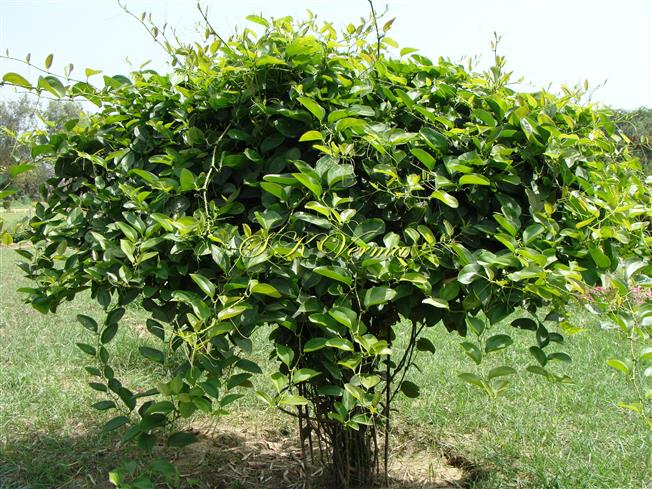
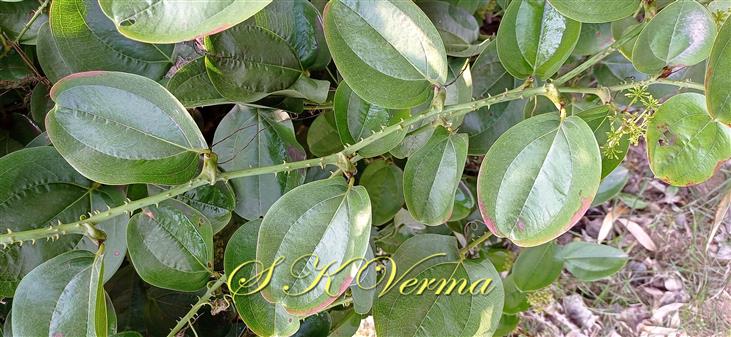
-DSC02917.jpg)
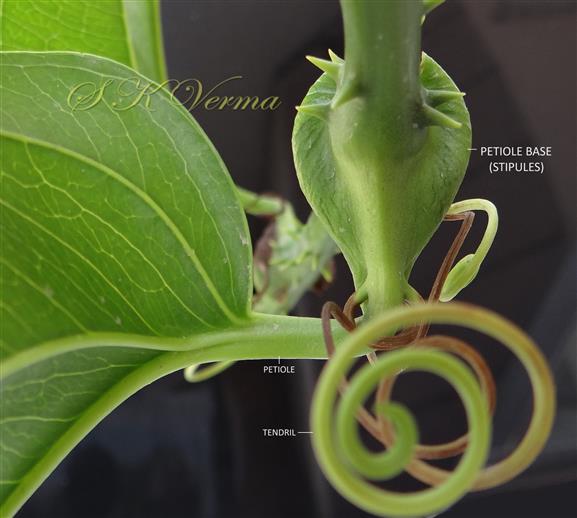
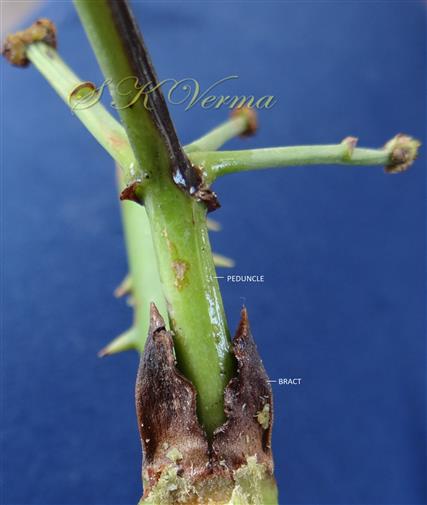
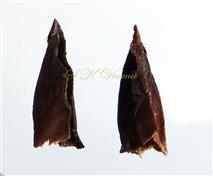
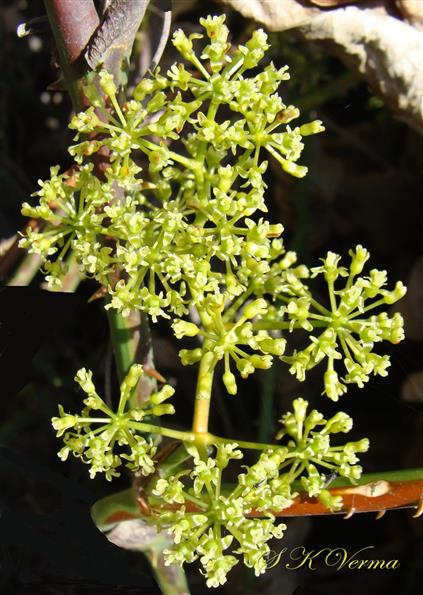
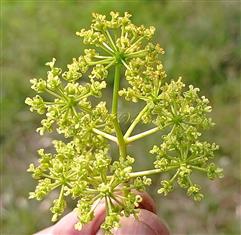
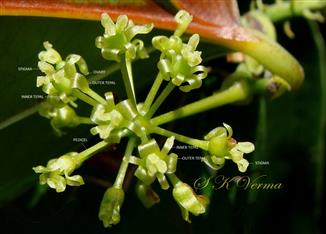
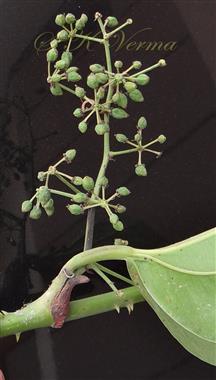
-DSC02897.jpg)



-DSC02917.jpg)







-DSC02897.jpg)